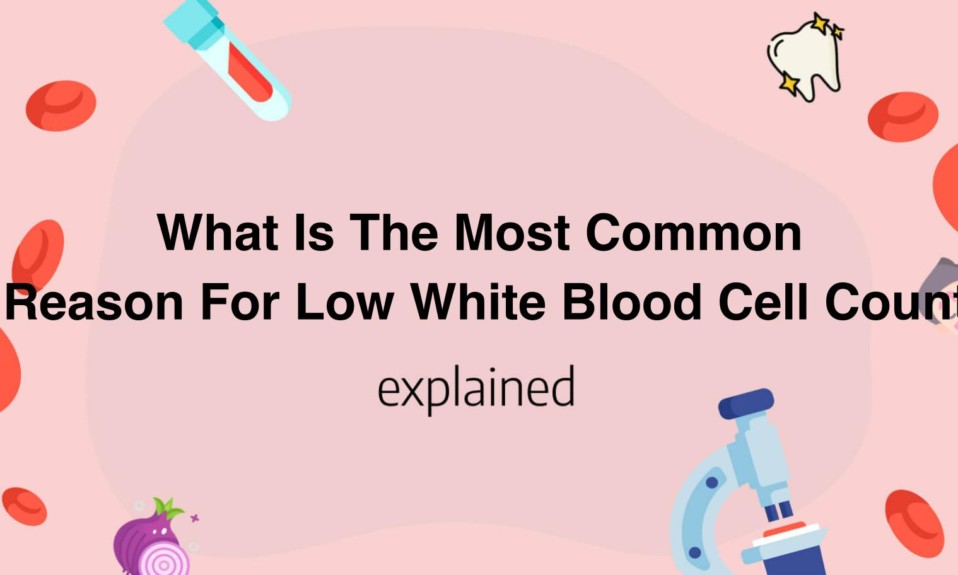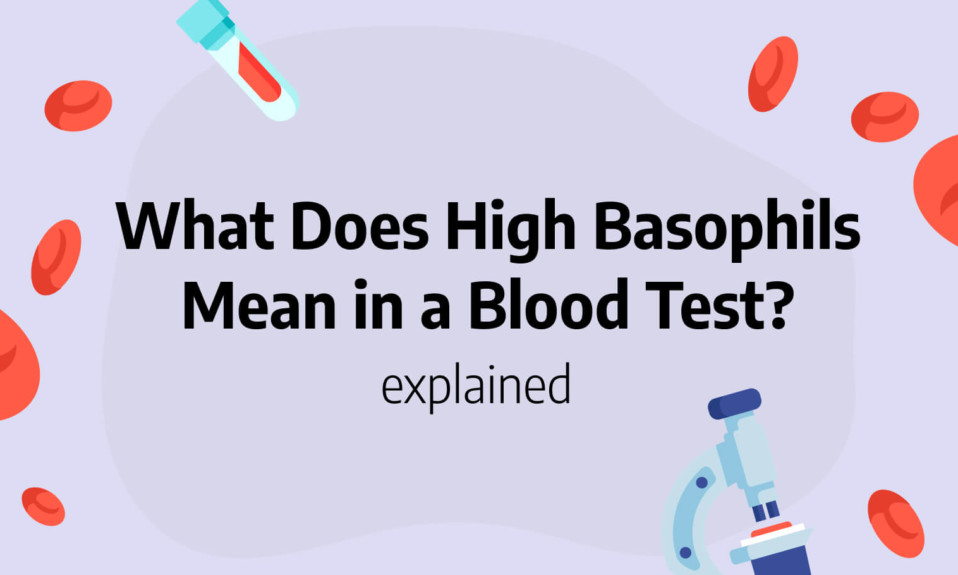In this post, you’ll learn what you need to know about lymphopenia.
Lymphopenia is a blood disorder that results in a decrease in certain white blood cells, called B and T lymphocytes, and affects the effectiveness of the immune system.
It is defined as a total lymphocyte count of less than 1,500 per mm3 in adults and less than 4,500 mm3 in children under eight months of age.
Sometimes inherited, lymphopenia is most often secondary to other causes, the most common of which are malnutrition and AIDS.
What is lymphopenia ?
Lymphopenia is a blood disorder in which there is a decrease in certain white blood cells, called B and T lymphocytes.
It is defined as a total lymphocyte count of less than 1,500 per mm3 in adults and less than 4,500 mm3 in children under 8 months.
Lymphocytes make up 20-40% of the total number of white blood cells in the blood and play various roles in the immune system such as protection against bacteria, viruses, fungi and parasites.
Types of lymphopenia
Lymphopenia can be :
- Acquired: it is then secondary to many diseases;
- Hereditary.
Causes of lymphopenia
The causes of lymphopenia are numerous and can be classified according to their consequences on lymphocytes:
- Insufficient lymphocyte production: primary immune deficiencies (including Wiskott-Aldrich syndrome) or secondary immune deficiencies due to zinc deficiency, proteinocaloric malnutrition or alcoholism;
- An excess of catabolism – a set of chemical reactions that break down molecules – of lymphocytes linked to radiotherapy, chemotherapy, immunosuppressive treatments, the human immunodeficiency virus (HIV) or AIDS, systemic lupus erythematosus (autoimmune disease);
- A change in the distribution of lymphocytes: hypersplenism (excessive activity of the spleen), certain viral infections (hepatitis, influenza, tuberculosis, typhoid fever, sepsis…), septic shock, extensive burns, granulomatosis (diseases involving inflammatory tumors within a tissue.) and corticosteroid therapy;
Other causes are listed but their mechanism remains poorly understood:
- Renal failure;
- Lymphoma (cancer of the lymphatic system that develops at the expense of lymphocytes);
- Solid tumor (more or less voluminous lump due to an excessive multiplication of cells, cancerous or not);
- Rheumatoid arthritis;
- Idiopathic lymphopenia, characterized by a decrease in the number of circulating CD4 T lymphocytes…
You’ll also like: Low White Blood Cell Count: Causes, Symptoms, Leukopenia
How is lymphopenia diagnosed?
The diagnosis of lymphopenia is made by a hematologist.
Lymphopenia is first assessed by measuring the level of B and T lymphocytes in the blood via the blood count.
Lymphopenia is confirmed when this level is less than 1,500 per mm3 in adults and 4,500 mm3 in children under eight months of age.
Other tests are then performed to investigate the cause of the lymphopenia:
- Blood count or CBC;
- Blood test and clearance – the ratio of the rate of elimination of creatinine by the kidneys (through the urine) to its concentration in the blood – of creatine;
- C-reactive protein (CRP) assay, which serves as a biological marker of inflammatory reactions;
- Electrophoresis – the separation of blood proteins under the influence of an electric field – for the determination of albumin and gamma globulin (antibody-rich blood products);
- Determination of anti-nuclear antibodies and anti-native DNA antibodies;
- Determination of lactic dehydrogenases (LDH), enzymes synthesized by our cells and transporting hydrogen;
- Determination of angiotensin converting enzyme, a peptide involved in the maintenance of blood volume and blood pressure;
- Blood (calcemia) and urine (calciuria) measurement of calcium;
- Immunophenotyping of T and B lymphocytes;
- HIV and HTLV (Human T-Lymphotropic Virus) serology;
- Chest X-ray.
Who is at risk to lymphopenia?
When it is not hereditary, lymphopenia is secondary to a disease: everyone can therefore potentially be affected.
However, it particularly affects people who are malnourished or have AIDS.
Factors favoring lymphopenia
The number of lymphocytes may temporarily decrease in the following situations:
- Malnutrition;
- Certain viral infections, such as influenza or hepatitis;
- Fasting;
- Times of great physical stress;
- The use of corticosteroids;
- Chemotherapy and/or radiotherapy for cancer treatment;
- Belonging to certain ethnic groups, such as Ethiopians.
What are the symptoms of leuphopenia?
No symptoms
Lymphopenia usually has no symptoms on its own. However, the signs of the associated disorder can be numerous.
Recurrent infections
Lymphopenia leads to recurrent infections or infections with unusual organisms.
Skin abnormalities
Alopecia (accelerated hair loss), eczema, pyoderma (purulent skin disease), telangiectasia (dilation of small blood vessels located near the surface of the skin, mucous membranes or the white of the eye) are all skin abnormalities that may suggest the presence of lymphopenia.
Other symptoms
- Pallor;
- Petechiae, small red to purplish skin spots;
- Jaundice or icterus;
- Oral ulcers;
- Enlarged lymph nodes and spleen -may suggest HIV infection;
- Small tonsils or lymph nodes -suggest an inherited immune system disorder;
- Painful swollen joints and rash -suggest rheumatoid arthritis or systemic lupus erythematosus.
Lymphopenia treatments
In the case of a moderate abnormality – the lymphocyte count is greater than 1200 per mm3 – and without associated clinical signs, lymphopenia should be monitored but does not necessarily require immediate treatment.
The treatment of lymphopenia then varies according to the cause detected:
- When it is due to an infection, a specific treatment (antibiotic, antifungal, antiviral or antiparasitic) targets the responsible microorganism;
- When it is the result of malnutrition, the deficiencies must be corrected;
If it is drug-induced, lymphopenia usually disappears within a few days after the drug is stopped; - If it is due to AIDS, a combination of drugs including at least three antiviral drugs of different classes (triple therapy) can increase the number of T cells and prolong survival;
- Hematopoietic stem cell transplantation may be considered for people with an inherited immune deficiency.
You’ll also like: Monocytes: low, high, absolute count and normal range, causes
Lymphopenia and Immune Function Monitoring
Monitoring immune function is crucial for patients diagnosed with lymphopenia, as the condition’s severity and progression directly impact the body’s defense capabilities. Healthcare providers typically establish personalized monitoring schedules based on the underlying cause, with more frequent blood tests recommended for those with severe depletion or active infections. Beyond simple lymphocyte counts, comprehensive immune monitoring may include assessments of specific lymphocyte subsets (T cells, B cells, and NK cells), immunoglobulin levels, and functional immune response testing. This detailed surveillance helps detect early signs of immunocompromise before serious infections develop and allows for timely adjustments to treatment protocols. For chronic lymphopenia patients, particularly those with primary immunodeficiencies or undergoing immunosuppressive therapy, this ongoing monitoring becomes an essential component of long-term management, informing decisions about prophylactic antibiotics, immunoglobulin replacement therapy, and infection precautions in daily life.










